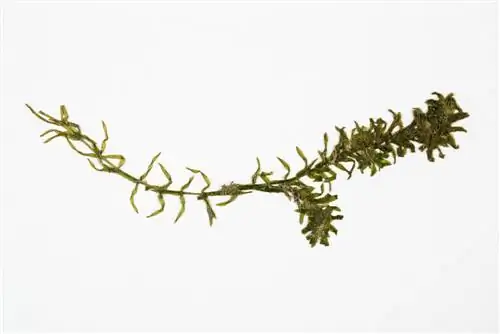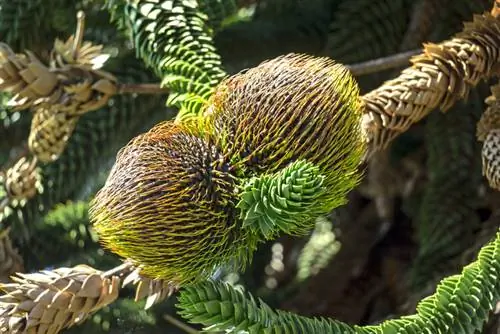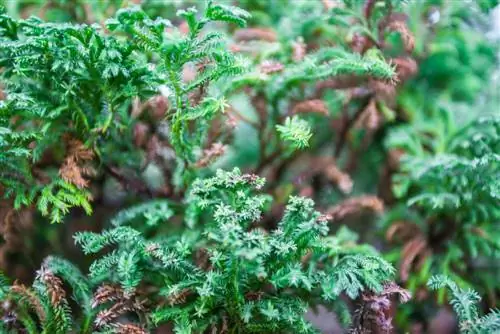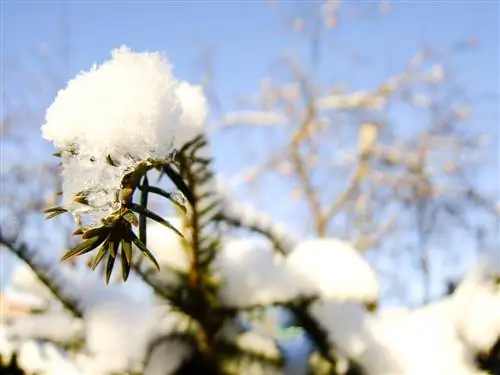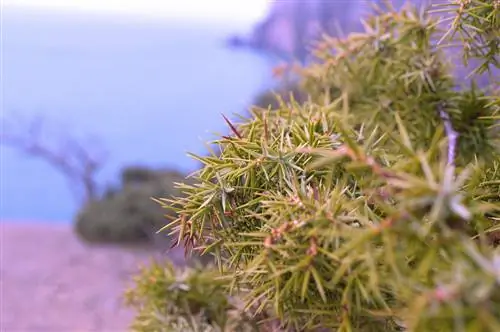- Author admin [email protected].
- Public 2023-12-16 16:46.
- Last modified 2025-01-23 11:22.
The waterweed is an evergreen aquatic plant that originally migrated from America. It also thrives in our climate and grows in numerous bodies of water. They are usually kept in aquariums and garden ponds without any problems. But why does it occasionally turn brown?
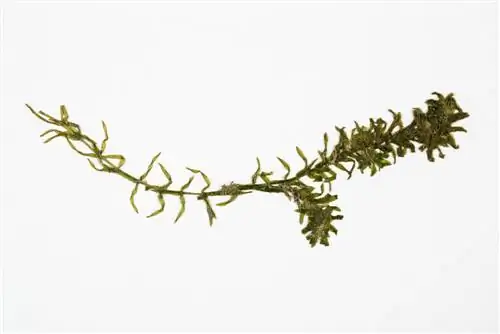
Why does waterweed turn brown in the aquarium?
Waterweed turns brown when it changes color in autumn, suffers from unfavorable living conditions in the aquarium or due to a lack of nutrients. It is advisable to remove brown leaves and shoots and address the causes to keep the plant he althy.
Brown color in autumn
Although waterweed is considered evergreen, it can change color in the pond in winter. Their shoots turn brown and sink to the bottom of the pond. The brown color is no reason to worry because the plant will sprout again in spring as soon as it gets lighter and the water temperature rises.
Tip
So that the brown plant parts do not rot in the depths of the pond and impair the water quality, you should fish them out as soon as possible.
Natural variety of colors
Waterweed is typically rich green, but it also has a variety of colors. It usually fluctuates between pale green and dark green. Occasionally it can also have reddish-brown leaves.
Unsuitable living conditions in the aquarium
Waterweed is considered a robust aquatic plant that hardly anything can stop it from growing. So if it turns brown completely or only in places, there must be valid reasons behind it. Even experienced aquarists do not agree on where to look first. That's why the following points are first questioned as possible triggers:
- Water that is too warm (over 26 °C)
- no constant temperatures in all pool areas
- too little light, possibly wrong color spectrum
- individual plant parts can also be in the shade
As the water plague re-emerges quickly, corrections in these areas will quickly show whether the investigation into the cause was successful.
Deficiencies in nutrient supply
The bigger the waterweed gets, the higher its nutrient requirements increase. If nutrients are missing or their composition is not ideal, brown leaves can also occur. A precise check must be carried out here in order to take targeted countermeasures if necessary.
Remove brown leaves and shoots
Remove all brown leaves and shoots from the aquarium as they will not change color. If these are not only brown but also muddy, they will soon affect the water quality.
It is enough if you replant a few small, he althy pieces of waterweed in the aquarium so that further reproduction can occur.

